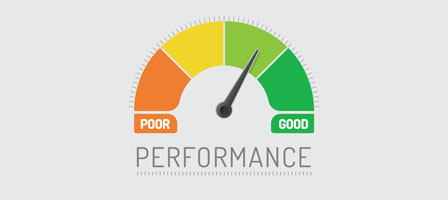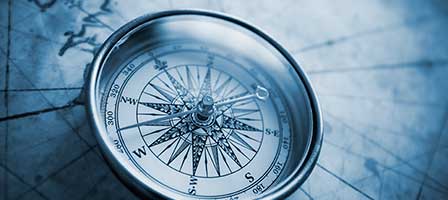A BEGINNER’S GUIDE TO BOOKKEEPING
If you’re a new business owner, you might not remember the last night you slept more than four or five hours. Your days may be filled with developing marketing strategies, screening potential employees and trying to figure out how to set up a bookkeeping system. If working with numbers isn’t your favorite pastime, the latter activity may be posing quite a challenge. If you can relate to this common scenario that new entrepreneurs face, the following beginner’s guide to bookkeeping might calm your frayed nerves and set you on the right course.
Cash Versus Accrual Basis of Accounting
A pivotal first step when setting up a bookkeeping system is deciding whether to use the cash or accrual basis of accounting. Cash accounting requires you to record transactions at the time cash changes hands. Both actual money and electronic funds transfers constitute cash. If you’re a sole proprietor working from home or at a one-person office, opting for cash accounting can make sense. However, if you’re going to extend credit to your customers or request credit from your suppliers, you must utilize accrual accounting. Accrual accounting dictates that you record sales or purchases immediately, even if you receive cash from a customer or pay cash to a creditor at a later date.
Single- Versus Double-Entry Accounting System
Single-entry bookkeeping is similar to maintaining a check register. You record transactions when you make deposits into your business account or pay bills. This method only works if you own a small company with a low volume of transactions. If you own a mid-size or large business that is complex, a double-entry bookkeeping system is needed. With this type of system, at least two entries are made for every transaction. One account is debited, while another one is credited. A simultaneous debit and credit system is the key to a double-entry bookkeeping system.
Balance Sheet Basics
Before you can successfully develop a bookkeeping system, you must understand the basic balance sheet accounts: assets, liabilities and equity. If you don’t carefully track these items and ensure the transactions that deal with them are recorded in the right place, your books won’t balance. The accounting equation is a simple formula you can use to ensure your books always balance. This handy equation is: assets = liabilities + equity.
Assets
Assets are things your business owns, such as accounts receivables and inventory. On the balance sheet, assets are typically listed in order of their liquidity. For instance, the assets section of a balance sheet might begin with cash followed by marketable securities, inventory and accounts receivables. These accounts are referred to as current assets. Fixed assets, or tangible assets, round out the first portion of the balance sheet. They include things you can touch such as land, buildings and equipment.
Liabilities
Liabilities are things a company owes to third parties such as suppliers and banks. The liabilities section of the balance sheet comprises both current and long-term accounts. Current liabilities, those expected to be paid within a year, typically include accounts payable and accruals. Accounts payable contains amounts owed to suppliers. This account may also encompass credit card and bank debt. Accruals consist of taxes owed, including:
- Sales taxes
- Social security taxes
- Medicare taxes
Long-term liabilities, such as bonds and mortgages, aren’t expected to be paid off during the next year.
Equity
Equity represents the ownership a business owner and other investors have in a company. If you’re the only person who has put money into your business, the equity section of the balance sheet will only have one account in it.
Income Statement Basics
In addition to being familiar with balance sheet accounts, understanding income statement basics is critical to setting up a superb bookkeeping system. The income statement consists of revenue and expense accounts.
Revenues
Revenue represents all the income received when selling goods or services. On the income statement, revenues are classified as either “operating” or “non-operating.” Operating revenues stem from your business’s main operations. Sales is an example of this type of revenue. Non-operating revenues are earned from some other activity such as rent or interest revenue.
Expenses
Expenses are the costs incurred to run your business. On the income statement, expenses are classified as either cost of goods sold, operating or non-operating. Cost of goods sold represents the cash a company spends to manufacture or buy the products or services it sells to customers. Operating expenses are the costs a company incurs as part of its regular business activities excluding cost of goods sold.
Examples of operating expenses include:
- Supplies expense
- Wages expense
- Rent expense
- Utilities expense
Non-operating expenses are incurred for reasons outside the scope of normal business activities such as interest expense.
Benefits of Working With a Bookkeeping Professional
Besides familiarizing yourself with the aforementioned beginner’s guide to bookkeeping, working with a professional accounting expert is a smart idea. Numerous details go into managing your enterprise’s bookkeeping. Even a trivial mistake such as putting a decimal point in the wrong place can wreak havoc on your books. In addition to assisting you in setting up and managing a bookkeeping system, an accounting professional can help you raise financing, develop a pricing structure for your goods or services, and discover ways to save money on operations. Establishing a relationship with a reputable bookkeeper may both decrease your stress levels and increase your odds of long-term business success.








Leave a Reply
Want to join the discussion?Feel free to contribute!